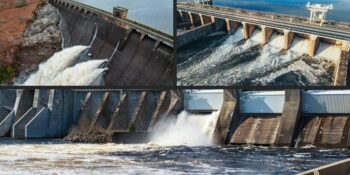Renewable energy is gathered from renewable resources naturally replenished on a human timescale, including sunlight, wind, water movement, and geothermal heat. This article discusses renewable energy, how it works for us, and its market value.
What is Renewable Energy?
Renewable energy emanates from natural origins and is refilled at a higher rate than consumed. For example, these energy sources include solar, wind, geothermal, and hydroelectric energy. Renewable energy sources are abundant all around us.
Renewable sources are often associated with green and clean energy, but there are subtle differences between these three energies. Whereas renewable sources are those that can be recycled, clean energy is those that do not emit pollutants such as carbon dioxide, and green energy is that which comes from natural origins.
Generating renewable energy produces far fewer emissions than burning fossil fuels. A transition from fossil fuels, which currently account for the vast majority of emissions, to renewable energy is key to managing the climate crisis.
How does Renewable Energy work for us?
The most significant aspect of clean energy is the environmental advantages as part of a global energy future. While clean, renewable resources keep the world’s natural resources, they also decrease the risk of environmental disasters, such as fuel spills or the issues associated with natural gas leaks.
With fuel diversification, different power plants using different energy sources can create reliable power supplies to enhance energy security, ensuring enough to meet our demands. Clean energy supplies a variety of environmental and financial advantages, including a reduction in air breakdown.
A diverse clean energy reserve also reduces the support on imported fuels (and the associated economic and environmental prices this incurs). Renewable clean energy also has intrinsic cost savings, as there is no requirement to extract and transport fuels, such as oil or coal, as the resources naturally replenish. Another industrial benefit of a pure energy mix is the result of jobs to develop, simulate and install the pure energy resources of the future.
How are Growing Global Renewable Energy Markets?
According to Globe News Wire, the global renewable energy market value was USD 910.5 billion in 2021. It is expected to reach USD 1510.2 billion by 2028, registering a compound annual growth rate of 8.8% from 2021 to 2028.
Key Companies
Some prominent global renewable energy market players include ABB, Xcel Energy Inc., EDF Energy, National Grid Renewables, Acciona, Enel Spa, Innergex Renewable Energy, Tata Power, Company Limited, General Electric, and Invenergy.










